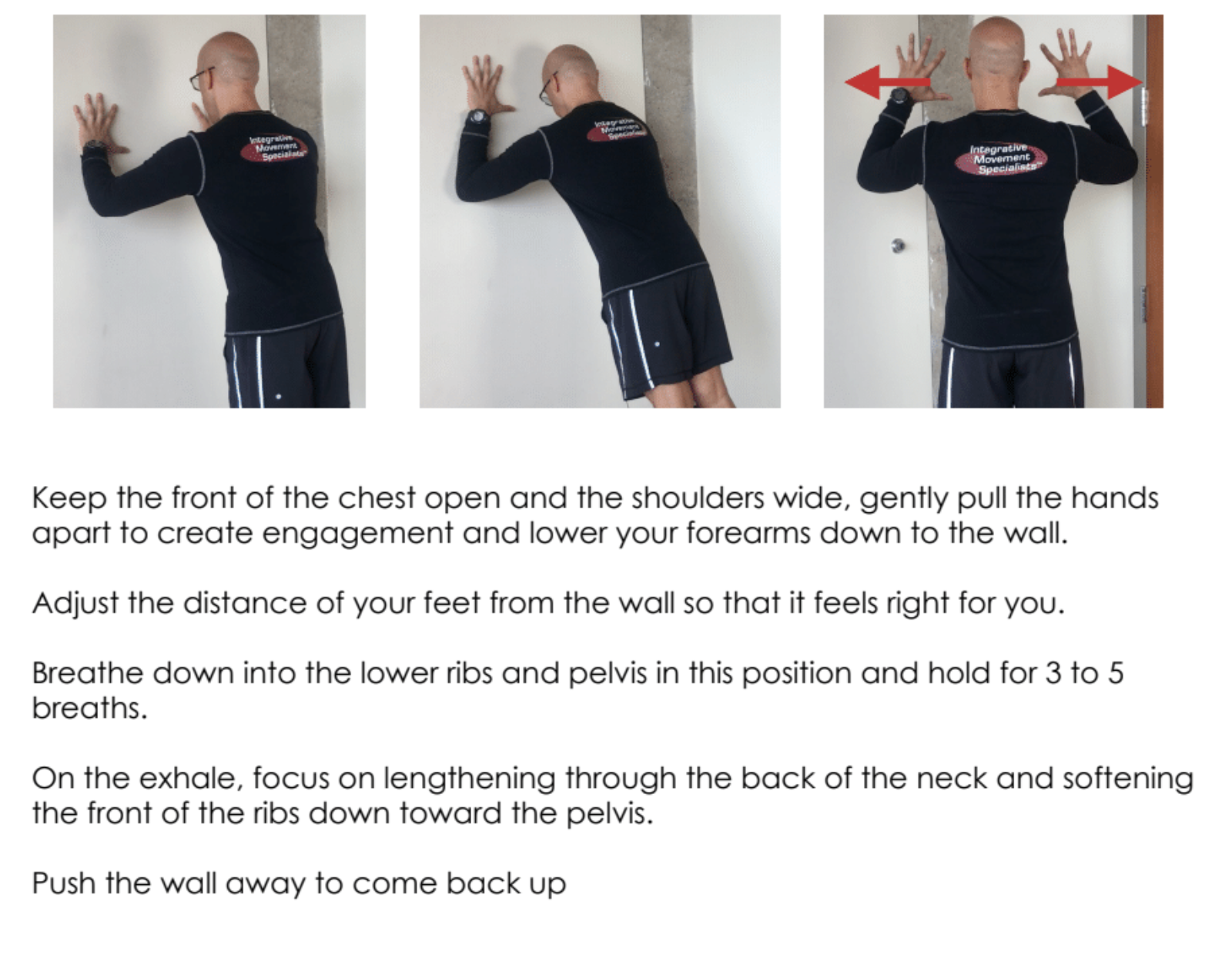Give this a try for your neck and shoulders.


During this month's newsletters, we have discussed the connections of our head, neck, shoulders, and rib cage, as well as the role of that one thing we do all day long that can contribute to our neck and shoulder discomfort, breathing.
In today's installment, we will discuss some 'easy' things you can do to help calm that nagging discomfort. Easy is in quotes because you can easily overdo the suggestions we will make here.
Let's talk posture first. From a young age, you may have heard, 'stand up straight, pull your shoulder back, etc.'
This was well-meaning advice. However, it likely was not great for your neck and shoulders over time. Our spines are not straight, at least not from top to bottom. They have gentle curves to help lessen the pressure when we load them. Our shoulders are not meant to be back behind the rest of our bodies. If our shoulders are back, doing work in front of our bodies is challenging.
Let's add just a little more challenge to the above. You likely heard similar cueing if you have exercised and followed mainstream exercise programs for the last 50+ years. I say this respectfully; they were well-meaning (as were we), and we know differently now.
Our cueing now encourages joint alignment and only uses the right amount of muscular effort for the task. Not the same effort to put a glass in the cabinet as pushing or pulling fifty pounds.
Are you looking for some clarification on that last point?
It is an important one so let's clarify.
If you are at the gym and with every repetition of an exercise, you pull your shoulders down and back; your brain will remember that setup or rhythm when you go to lift or move anything. That setup of bringing your shoulders down and back may help for a very specific short-term movement, say if you are a bodybuilder trying to lift a 350-pound chest press. Otherwise, for everyday life, even general working out, it is an inefficient and unnatural way to move.
Our goal is to return to a more natural way of moving our shoulders to restore joint alignment, decrease the pressure on our necks and shoulders, and move more efficiently.
Let's get started:
First, assess how your neck and shoulders are moving and feeling. We have done this in a previous newsletter. Be sure to compare differences side-to-side and the quality of the motion when you move.
Second, you may want or need to release some restricted muscles around your shoulder. Choose the side that did not move as far. The release pictured below can be done with a small ball or a foam roller.
Third, once you release the larger, more restricted muscles, you must activate or turn on the small deeper muscles that support the bones of the joint. These are small muscles less is more. Just a few reps and gentle (imagine as if) pressure or resistance as you activate them.
Check in: Do you feel or see an improvement in how your neck and shoulders feel or move?
Fourth, you will want to use this more free motion in an activity with some new cues:
A plank at the wall or counter height is a great way to start.
You can perform is with just hands or on the forearms. The key now is your cues to yourself. Rather than pull the shoulder back or down, 'think' or 'imagine' length through your collar bones out towards your shoulders. 'Imagine' you are pulling your hands apart. This will help activate the smaller muscles of the joint while the larger muscles hold your body.
After you are done check your neck and shoulders again. You should feel pretty good if you use your new cues well.


Now you may be feeling pretty good after this sequence. The secret sauce is consistency and.....
We love how we feel when we release tight and sore muscles. However, if you release and have not followed up with the activation of deeper muscles and put the new range of movement into some simple exercise to help stabilize it, you may feel the tightness returns quickly and feels even worse.
We hope you have received some good tips from this series on the neck and shoulders.
If you have questions or feel like you may need something specific for you, reach out.
We can help.

